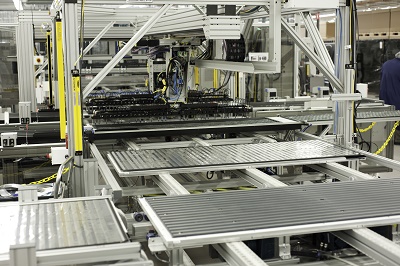Solar panel manufacturing presents many opportunities and in Thailand, investors are getting more interested given the country’s lower operating costs and a host of other incentives to producers. In addition, solar panels made in Thailand are not imposed high tariffs in the United States and Europe. Thailand government also strongly supports the growth of the industry and introduced ways to boost its industry like encouraging the use of solar panels in commercial and residential places.
The use of alternative renewable energy is being promoted by the Thai government with its resolve to construct more solar farms. Based on the 2015-2036 Power Development Plan (PDP), Thailand aims to raise its renewable energy supply to 30 percent of national energy capacity by 2036. The Ministry of Energy's Integrated Energy Blueprint (IEB) covers such areas as energy efficiency, power, and alternative energy development plans, along with the gas and oil roadmaps.

Thailand has also been on the forefront of renewable energy production in the Southeast Asian region. About 1,500MW of solar capacity was connected to the grid in 2015 at an investment of $2.7 billion. This raised solar capacity to around 2,500-2,800MW in 2015 from about 1,300MW in 2014.
These factors have contributed to Chinese companies engaged in solar panels to have turned to Thailand as a production hub. Aside from the low tariffs and import duties, Thailand offers lower operating costs due to reasonable rental and manpower prices.
One company, China’s Yingli Solar, has partnered with Thailand's Demeter Corp. to produce multi-crystalline photovoltaic panels in Thailand. The plant will begin operations in the second half of this year. The two is also slated to build a 300MW solar power plant in Rayong (southeast of Bangkok) at an investment of $19 million. It is Yingli’s first plant outside China. Based on the agreement, Yingli will hold a 40 percent stake in the venture. The project will be implemented at an investment of $19 million.
Yingli is not alone in exploring Thailand as an investment site. Photovoltaic module maker Trina Solar earlier announced a $160 million investment to construct a factory in Thailand. Construction of the facility is scheduled to start this year and targets 700MW solar cells that can produce power and 500MW solar panels that can generate electricity.
Trina Solar’s Chief Operating Officer, Zhiguo Zhu, said that the company’s module unit has looked at Thailand as an investment site due to its close proximity to emerging markets in the Asia Pacific region, low labor costs, and ease of doing business.
Thai company, Advanced Connection Corporation, has also moved to diversify into the solar business by acquiring solar panel manufacturer, Four Us Technology Co from existing shareholders for 11.25 million baht
Mega-solar facilities on the rise
Thai solar power utility SPCG Public starged to operate large solar facilities in Thailand six years ago. These facilities have combined output of 260MW or about one-fifth of the country's total solar-generated electricity. The company developed two solar farms in June 2014 with output capacity of 7,460kW each. The electricity from these solar farms is sold to the Provincial Electricity Authority at $6.92 million annually. Japanese company, Kyocera, supported SPCG in this project.
Samart Corporation (SAMART), one of Thailand’s leading technology service providers, plans to invest around $559 million on the energy sector. The company is eyeing a solar farm venture in Thailand but still awaits certain policy from the government.
Alle Artikel













